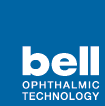The biggest eye hazard most of face is staring at the computer screens for hours while binging on “Fortnite.” People who have real jobs have more intense eye safety needs. Workers in auto repair, construction, manufacturing, plumbing welding are among the most vulnerable to eye injuries.
Government regulations specify what types of eye protection should be worn, including shields and other safety measures. Not all businesses comply or enforce these standards.
SUBHEAD: Know your patient’s eye safety needs
If you’re not already, you might intervene with a few pointed questions about their occupation. Red flags to watch for:
Anyone working in an area that has particles or flying dust must wear safety glasses with side shields.
Patients who work with radiation (welding, lasers or fiber optics) must use special-purpose safety glasses, goggles, face shields or helmets designed for those tasks.
Working around chemicals also requires wearing goggles.
Work with employers on eye safety practices
Your patients should know the requirements for their work environment. For example, side shields placed on your conventional glasses do not meet the OSHA requirement for most workplaces.
As an ophthalmologist or optometrist, you may also assist employers to assist in evaluating potential eye hazards in your workplace and be determining what type of eye protection may be needed.
This is serious business for patients and companies. OSHA estimates that there are 20,000 eye injuries a year. Together, they rack up a $300 million price tag for medical care, losses in productivity, legal and workers compensation.
Eye Safety Resources
Eye Safety from The National Institute for Occupational Safety and Health (NIOSH)
